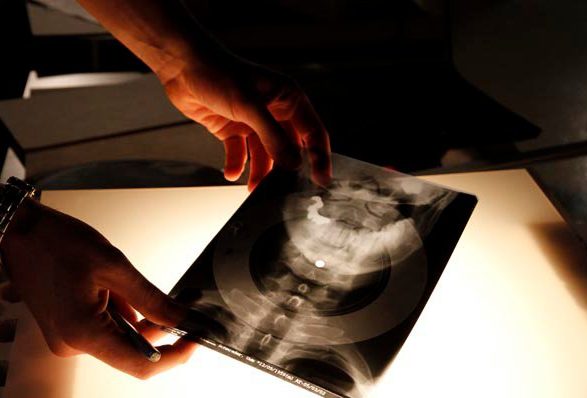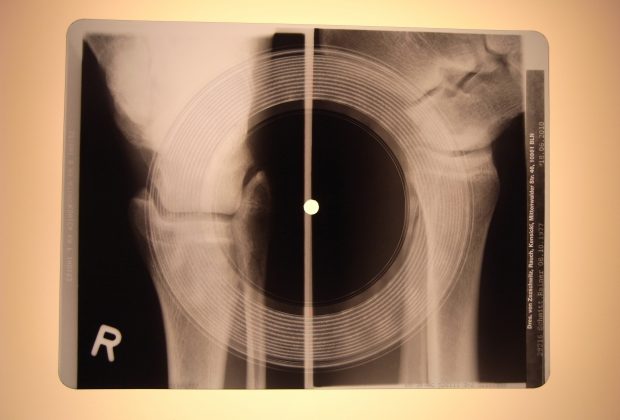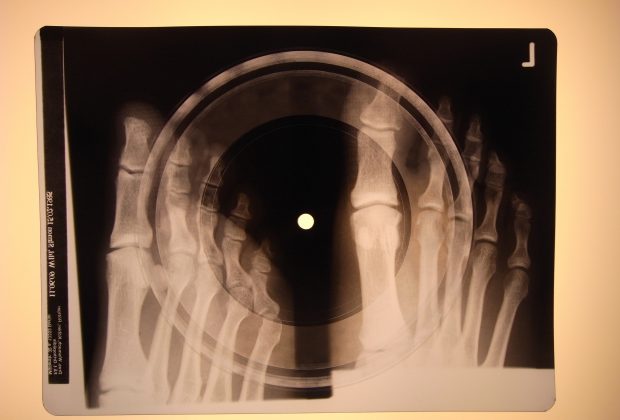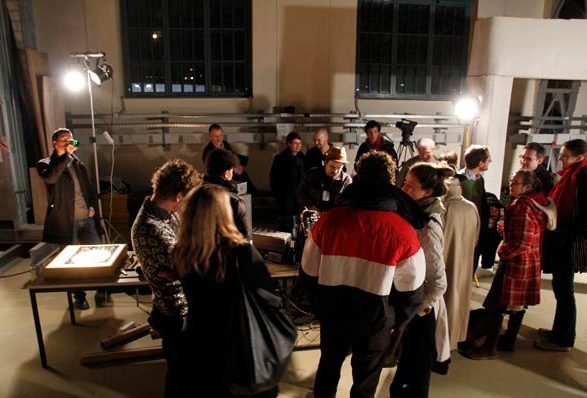Rock auf den Knochen (‚Rock on the bones’)
Artists: Susanne Kudielka & Kaspar Wimberley
X-Ray images are often kept as emotional souvenirs, images that strip us down to the bare bones, created to aid, dispel or confirm a medical prognosis that may not be visible to the naked eye. They are the answer to our hopes and fears. They reveal our mortality in a society that uses everything at its disposal to prevent the inevitable.
For the Past Forward Festival in Berlin we collaborated with Vinylizer to transform x-rays into records. An audience were invited to bring us an x-ray and a piece of music (or alternative audio material) that we then scratched into the image in our purpose built workshop. Upon completion we conducted a short private interview inside the festival structure of the Plattenvereinigung, discussing the x-ray image, and the connection this had to the music they had selected. The freshly manufactured (and very expensive) special edition was then played for the first time, a crackling soundtrack that repeatedly interrupted the festival DJ for the duration of the evening. Each record would have a limited lifespan, similar to the bones that span around on the turntable.
This process, historically referred to as ‚rock on the bones’ (Rok na kostyach), was first used in the former UdSSR during the Cold War, to facilitate the illegal distribution of popular western Rock’n’Roll music; Utopian objects on which music from the west, was played on the bones from the east.
The Past Forward Festival was presented by the Plattenvereinigung, in collaboration with the Maxim Gorki Theater in Berlin.






